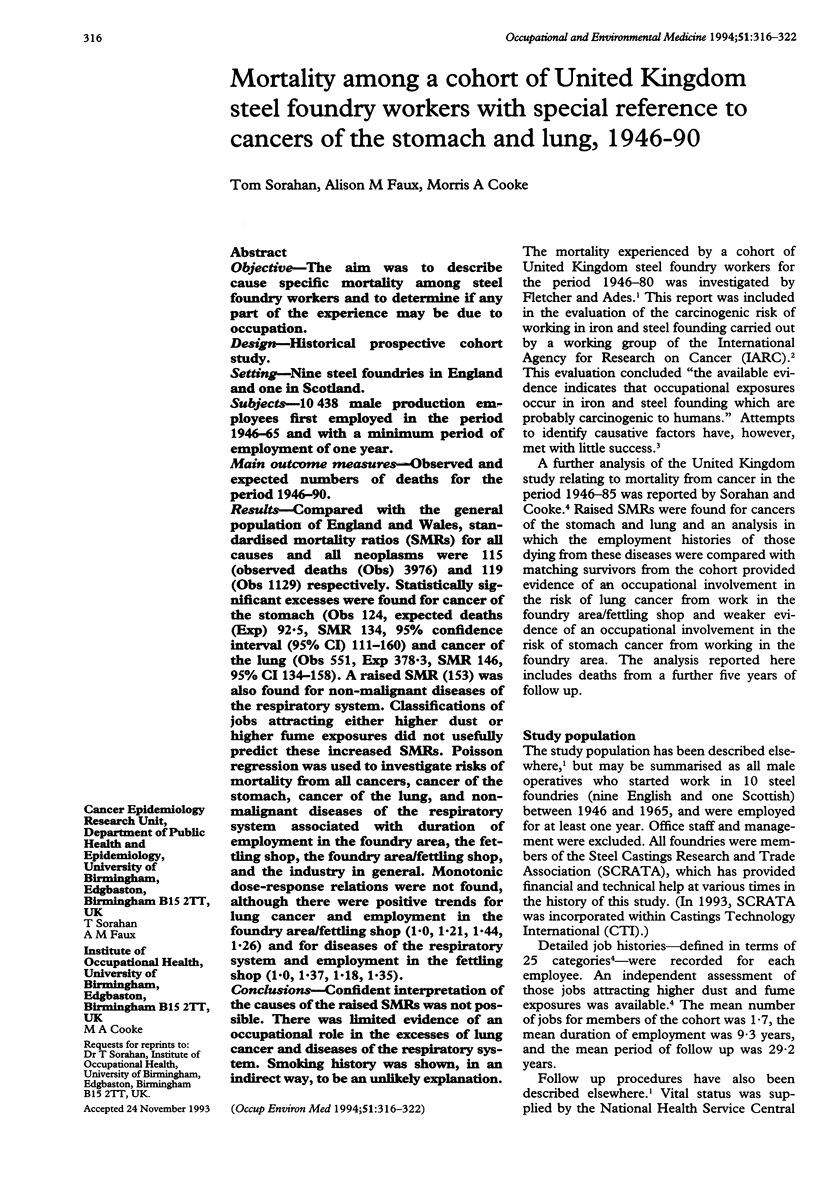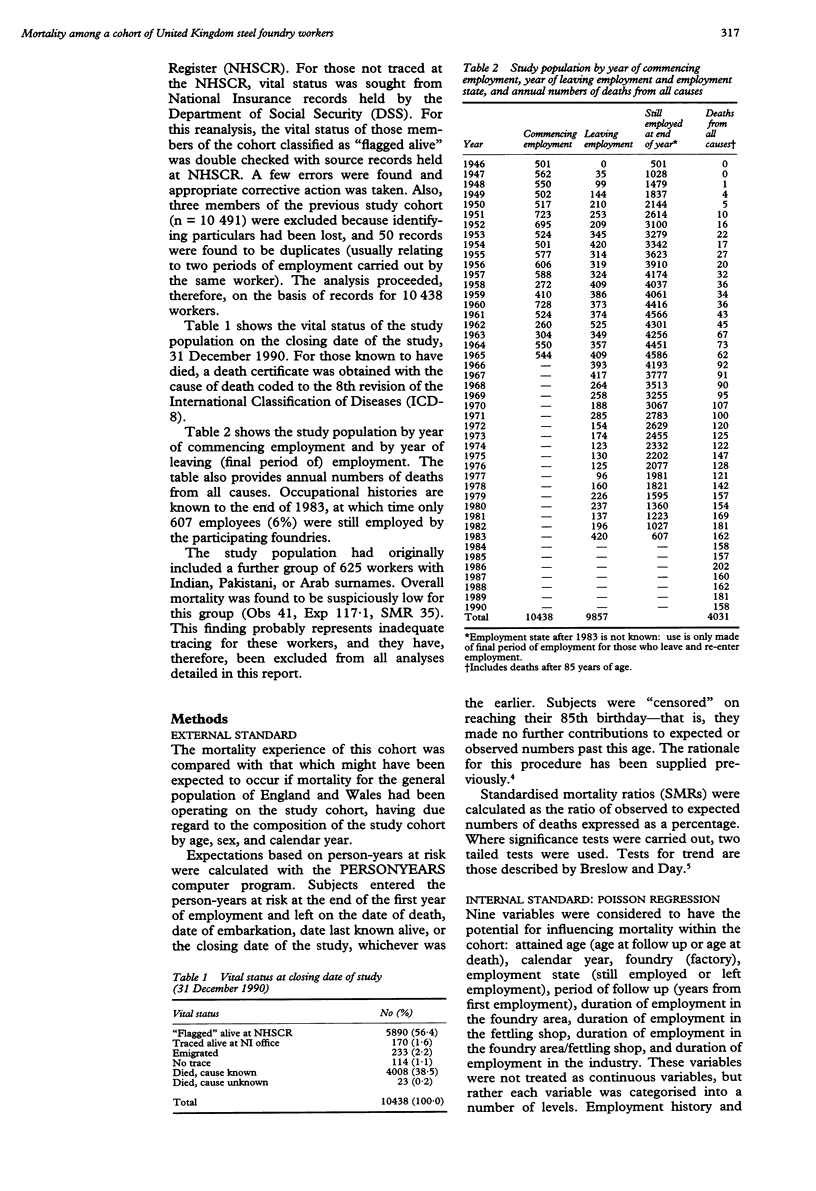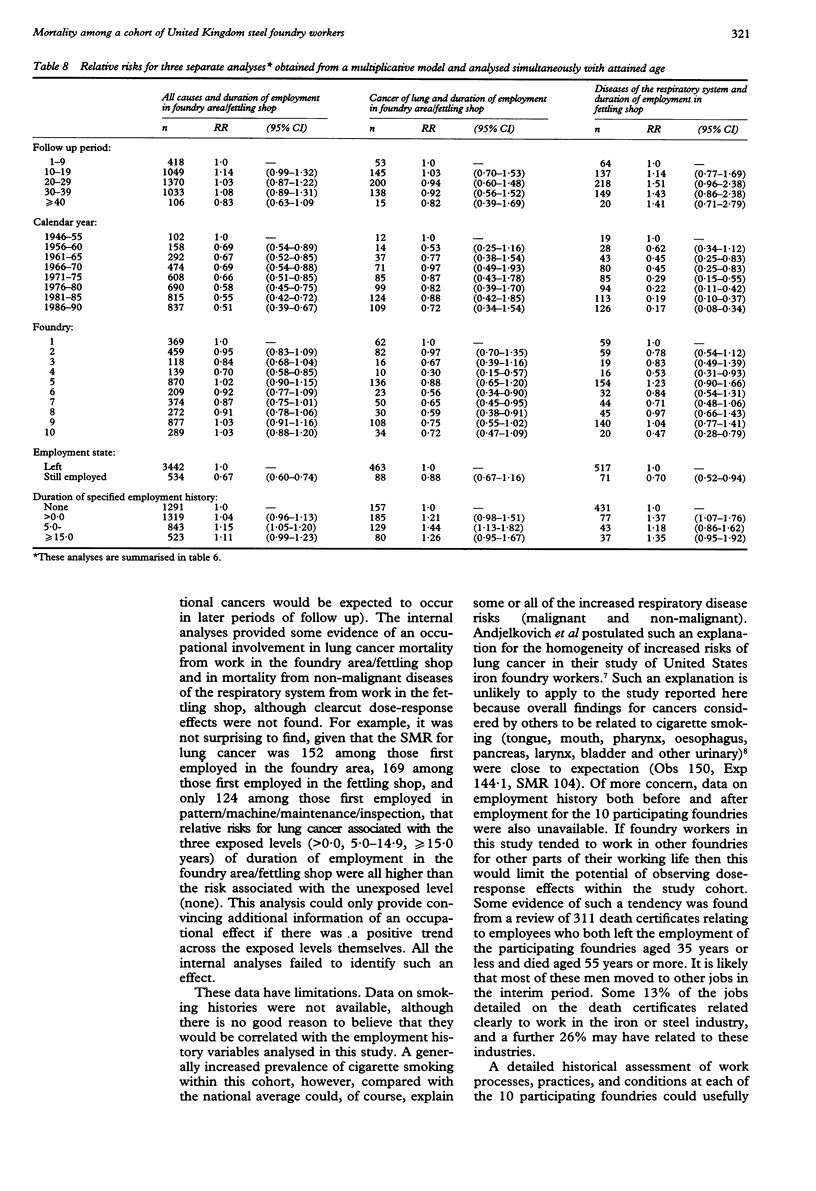Abstract
OBJECTIVE--The aim was to describe cause specific mortality among steel foundry workers and to determine if any part of the experience may be due to occupation. DESIGN--Historical prospective cohort study. SETTING--Nine steel foundries in England and one in Scotland. SUBJECTS--10,438 male production employees first employed in the period 1946-65 and with a minimum period of employment of one year. MAIN OUTCOME MEASURES--Observed and expected numbers of deaths for the period 1946-90. RESULTS--Compared with the general population of England and Wales, standardised mortality ratios (SMRs) for all causes and all neoplasms were 115 (observed deaths (Obs) 3976) and 119 (Obs 1129) respectively. Statistically significant excesses were found for cancer of the stomach (Obs 124, expected deaths (Exp) 92.5, SMR 134, 95% confidence interval (95% CI) 111-160) and cancer of the lung (Obs 551, Exp 378.3, SMR 146, 95% CI 134-158). A raised SMR (153) was also found for non-malignant diseases of the respiratory system. Classifications of jobs attracting either higher dust or higher fume exposures did not usefully predict these increased SMRs. Poisson regression was used to investigate risks of mortality from all cancers, cancer of the stomach, cancer of the lung, and non-malignant diseases of the respiratory system associated with duration of employment in the foundry area, the fettling shop, the foundry area/fettling shop, and the industry in general. Monotonic dose-response relations were not found, although there were positive trends for lung cancer and employment in the foundry area/fettling shop (1.0, 1.21, 1.44, 1.26) and for diseases of the respiratory system and employment in the fettling shop (1.0, 1.37, 1.18, 1.35). CONCLUSIONS--Confident interpretation of the causes of the raised SMRs was not possible. There was limited evidence of an occupational role in the excesses of lung cancer and diseases of the respiratory system. Smoking history was shown, in an indirect way, to be an unlikely explanation.
Full text
PDF






Selected References
These references are in PubMed. This may not be the complete list of references from this article.
- Andjelkovich D. A., Mathew R. M., Yu R. C., Richardson R. B., Levine R. J. Mortality of iron foundry workers. II. Analysis by work area. J Occup Med. 1992 Apr;34(4):391–401. [PubMed] [Google Scholar]
- Fletcher A. C., Ades A. Lung cancer mortality in a cohort of English foundry workers. Scand J Work Environ Health. 1984 Feb;10(1):7–16. doi: 10.5271/sjweh.2361. [DOI] [PubMed] [Google Scholar]
- Fox A. J., Collier P. F. Low mortality rates in industrial cohort studies due to selection for work and survival in the industry. Br J Prev Soc Med. 1976 Dec;30(4):225–230. doi: 10.1136/jech.30.4.225. [DOI] [PMC free article] [PubMed] [Google Scholar]
- Gibson E. S., McCalla D. R., Kaiser-Farrell C., Kerr A. A., Lockington J. N., Hertzman C., Rosenfeld J. M. Lung cancer in a steel foundry: a search for causation. J Occup Med. 1983 Aug;25(8):573–578. [PubMed] [Google Scholar]
- Sorahan T., Cooke M. A. Cancer mortality in a cohort of United Kingdom steel foundry workers: 1946-85. Br J Ind Med. 1989 Feb;46(2):74–81. doi: 10.1136/oem.46.2.74. [DOI] [PMC free article] [PubMed] [Google Scholar]


